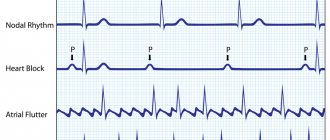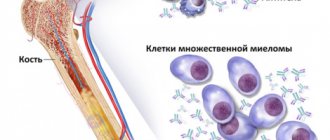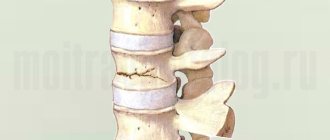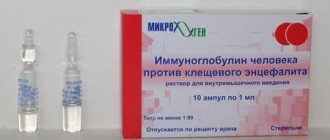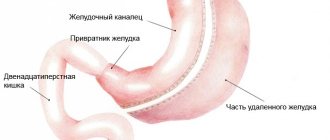Traumatic shock is the general condition of the body that occurs against the background of heavy bleeding and intense pain. In most cases, the complication causes loss of health and life of the patient if measures are not taken. Shock occurs from situations associated with damage to the brain, spine, lungs and other important organs.
Traumatic shock occurs against a background of heavy bleeding and intense pain.
Frostbite, chemical and thermal burns, as well as numerous fractures can lead to a pathological condition. To save the victim, you need to know the symptoms, methods and basic rules for providing first aid for traumatic shock, and apply them regardless of the type of injury.
Causes
Traumatic shock is a pathological condition that threatens the life of the patient, which occurs due to severe injuries. Timely first aid for traumatic shock can save lives.
In this case, traumatic shock leads to:
- traumatic brain injury;
- severe gunshot wounds;
- abdominal trauma with damage to internal organs;
- pelvic bone fractures;
- operations.
The main reason for the development of traumatic shock is the rapid loss of a large volume of plasma or blood. For this type of shock, it is not the amount of blood loss that is important, but its speed, since the patient’s body does not have time to adjust and adapt. Therefore, a state of shock often occurs when large arteries are injured. The severity of shock is aggravated by severe pain and mental stress.
Also, injuries with damage to particularly sensitive areas (neck, perineum) and vital organs lead to the development of traumatic shock. The severity of shock in these cases is determined by the intensity of the pain syndrome, the amount of blood loss, the degree of preservation of organ function and the nature of the injury.
Shock may be:
- Primary (early) - occurs immediately after injury as a direct reaction to it.
- Secondary (late) – develops 4-24 hours after the onset of injury. Often occurs as a result of additional trauma (cooling, during transportation, renewed bleeding). The most common type of secondary shock is postoperative shock in the wounded.
Types of shock
The condition can be caused by internal and external factors. Depending on this, there are several types of shock:
- Cardiogenic is a consequence of a disturbance in the functioning of the heart. Develops with myocardial infarction, angina pectoris, atrial fibrillation.
- Hypovolemic – associated with a sharp decrease in blood volume in the body due to severe bleeding and dehydration.
- Septic is a consequence of severe inflammation leading to hypoxia (insufficient oxygen supply) of tissues and cells, multiple organ failure (failure of several systems at once).
- Anaphylactic is an extreme allergic reaction. It develops after the introduction of medications or poisons into the body.
- Traumatic – a consequence of trauma with significant damage to tissues and organs (gunshot wound, multiple fractures, traumatic brain injuries).
- Infectious-toxic shock develops due to the ingestion of large amounts of toxins into the body.
Also, some experts highlight psychogenic shock. The condition develops after severe mental shock (despair, grief, horror).
In practice, traumatic or cardiogenic shock is more common.
The development of a combined type is possible.
Shock mechanism
[ADSBLOCK]
Rapid blood loss leads to a sharp decrease in blood in the body. The patient's blood pressure drops, tissues do not receive enough oxygen and other nutrients, and intoxication increases. The patient’s body tries to independently stabilize blood pressure and compensate for blood loss; substances that constrict blood vessels (dopamine, cortisol, adrenaline) are released into the blood. As a result, spasm of peripheral vessels occurs. This allows you to maintain pressure at a normal level for some time. But peripheral tissues are poorly supplied with the necessary substances, which increases intoxication. Blood primarily goes to the heart, lungs, and brain, and the organs located in the abdominal cavity, skin and muscles do not receive enough nutrients.
But this mechanism stops working after a while. In the almost complete absence of oxygen, the vessels dilate again, and some of the blood enters here. As a result, the heart does not receive the required volume of blood and normal blood circulation is disrupted. The pressure drops. If it drops below a critical level, the kidneys fail (urine filtration decreases), and then the intestinal wall and liver. This leads to the fact that many microbes and their toxins enter the blood, and toxemia begins. The situation is aggravated by numerous foci of dead tissue resulting from a lack of oxygen, as well as a general metabolic disorder and acidification of the blood.
Pathogenesis
One of the key dangers of shock lies in the nature of its development. The condition tends to progress through a positive feedback mechanism. Poor blood supply leads to cell damage, which leads to an inflammatory response in response to the subsequent increase in blood flow to the affected area. Shock has four stages of development
, but since it is a complex and continuous state, there is no sudden transition from one stage to another. At the cellular level, shock is the process when the demand for oxygen becomes greater than the supply of oxygen.
initial stage
At this stage, the hypoperfused state causes hypoxia. Due to lack of oxygen, cells perform lactic acid fermentation. Since oxygen, the terminal electron acceptor in the electron transport chain, is scarce, it slows down the flow of pyruvate into the Krebs cycle, leading to its accumulation. Accumulation of pyruvate is converted to lactate by lactate dehydrogenase, hence lactate tends to accumulate (causing lactic acidosis).
Compensatory stage
This stage is characterized by the body using physiological mechanisms, including neural, hormonal and biochemical mechanisms in an attempt to change the overall pathological condition. As a result of acidosis, the body begins to hyperventilate to get rid of excess carbon dioxide (CO2). CO2 indirectly affects blood acidity levels. By removing CO2, the body tries to raise the pH of the blood. Baroreceptors in the arteries cause the release of adrenaline and norepinephrine. Norepinephrine causes predominantly vasoconstriction with a slight increase in heart rate, while epinephrine predominantly increases heart rate with little effect on vascular tone; the combined effect leads to increased blood pressure. The renin-angiotensin axis is activated and arginine vasopressin (antidiuretic hormone; ADH) is released to conserve fluid through the kidneys. These hormones cause the blood vessels in the kidneys, gastrointestinal tract, and other organs to constrict to drain blood to the heart, lungs, and brain. Due to decreased blood flow, the adrenal system exhibits characteristic low urine production.
Progressive stage
If the cause of the crisis is not successfully eliminated, the shock will move to a progressive stage and compensation mechanisms will begin to fail. Due to reduced cell perfusion, sodium ions accumulate inside and potassium ions move out. As anaerobic metabolism continues, the body's metabolic acidosis increases. Arteriolar smooth muscles and precapillary sphincters relax so that blood remains in the capillaries. Because of this, hydrostatic pressure will increase, and combined with the release of histamine, this will cause fluid and protein to leak into the surrounding tissue. As this fluid leaves, blood concentration and viscosity increase, causing microcirculation to form.
Prolonged vasoconstriction will also impair the functioning of vital organs due to decreased perfusion. If intestinal ischemia develops, bacteria can enter the bloodstream, leading to increased complications of endotoxic shock.
Refractory (irreversible) stage
At this stage, vital organs fail and the critical condition can no longer be prevented. Brain damage and cell death occur, and death becomes inevitable. One of the main reasons why shock is irreversible at this stage is that most of the cell's ATP is broken down into adenosine. The process occurs due to the absence of oxygen as an electron receptor in the mitochondrial matrix. Adenosine is readily perfused from cell membranes into the extracellular fluid, promoting capillary vasodilation, and then converted to uric acid. Since cells can only produce adenosine at a rate of about 2% of the cell's total demand per hour, even restoring optimal oxygen levels is of no use at this point.
Symptoms
In a state of shock, the same symptoms are observed as in severe internal or external bleeding.
- Pale skin that may feel damp and cold to the touch.
- Feeling of dry mouth, thirst.
- Frequent breathing.
- Weakness.
- Weak and rapid pulse.
- Anxiety.
- Confused consciousness, possible loss of consciousness.
Traumatic shock goes through two phases of development: erectile (for some it may be absent or short) and torpid.
The erectile phase occurs immediately after injury. It manifests itself as speech and motor agitation, fear, and anxiety. The victim is conscious. The person has impaired temporal and spatial orientation. The skin is pale, tachycardia is pronounced, breathing is rapid, blood pressure is normal or slightly elevated. In very severe injuries, the erectile phase may not be detected at all. Typically, the shorter this phase, the more severe the subsequent shock.
During the torpid phase, the victim is inhibited and lethargic. This is caused by inhibition of the nervous system, liver, kidneys, heart and lungs. The torpid phase is divided into 4 degrees of severity:
- I degree is easy. There is pallor of the skin, clarity of consciousness, slight lethargy, decreased reflexes and shortness of breath. The pulse increases to 100 beats.
- II degree is average. The victim is lethargic and lethargic, his pulse is 140 beats.
- III degree severe. The patient is conscious, but does not perceive the world around him. The skin becomes sallow gray. There is a cyanosis of the nose, fingertips and lips, and the presence of sticky sweat is noted. The pulse increases to 160 beats.
- IV degree – agony or pre-agony. There is no consciousness, reflexes disappear. The pulse is threadlike and sometimes disappears completely. Respiratory movements fade away.
Clinically, it is not always possible to correctly assess the patient’s condition in the first minutes or hours after the injury occurs. Signs that indicate the presence of an irreversible condition in shock have not yet been studied. There are cases when it seems that a victim who has received an injury complicated by shock dies, but timely anti-shock therapy allows the person to be brought out of a serious condition.
Degrees of traumatic shock and their clinic
It is not always possible to assess the severity of shock by injury. In the case of blunt abdominal trauma, it is generally unknown what damage the organs and tissues received. If time is very short, then the doctor can understand that the patient has traumatic shock, given the following symptoms:
- thready pulse, tachycardia up to 120, drop in pressure;
- lethargy, adynamism;
- dyspnea;
- oliguria, or decreased urine volume;
- sticky sweat, damp, cold skin, bluish or pale complexion, marbling of the skin
These are the main symptoms of torpid shock, then a diagnosis of “2nd degree traumatic shock” can be made.
If the shock is milder (grade 1 traumatic shock), then the patient is conscious, but, despite shortness of breath and tachycardia, the pressure is maintained independently. Often, the doctor’s actions make it possible to stabilize the patient’s condition even before hospitalization, and transport him to the hospital without fear.
With severe traumatic shock of the 3rd degree, the patient does not have the strength to turn his head, he is completely indifferent to his surroundings, and often has a sallow complexion. Diastolic pressure may not be detected at all, the systolic level is less than 60, the pulse reaches a frequency of 140 beats per minute. No urine is released. In such patients, stabilization of the condition is possible only in intensive care in a hospital.
How dangerous is traumatic shock?
The most ignorant person in medicine can understand that after shock of degrees 1, 2 and 3, a fourth degree can be distinguished - irreversible, after which agony begins. Such terminal shock is defined as a traumatic deep or extreme coma, with shallow, convulsive breathing, a very weak and thread-like pulse only in the central arteries.
Hemodynamics are so weak that patients develop stagnant spots (cadaveric spots in a living person) against the background of gray skin. There is dilation of the pupils, paresis of all sphincters.
After this, a period of cessation of spontaneous breathing and cardiac arrest occurs. Resuscitators have 3-4 minutes to bring a person back to life. As a rule, if clinical death continues for more than 5 minutes at room temperature, then upon revival at 5-6 minutes one can already expect rather severe personality changes due to the death of a large number of neurons.
- Of course, when drowning in ice water, for example, this time increases significantly.
In order to avoid this sad ending, you need to provide first aid in case of shock in a timely manner.
First aid
First aid for traumatic shock primarily involves eliminating the causes that caused it. Therefore, it is necessary to relieve pain or reduce it, stop bleeding and take measures to improve respiratory and cardiac activity. Before the doctors arrive, you can independently carry out a number of procedures that can improve the victim’s condition:
- Cover the person with a blanket or coat to maintain an optimal temperature, but avoid overheating. This event is especially important during the cold season;
- Place on a flat surface. The torso and head should be at the same level. If there is a suspicion of spinal damage, then the person should not be touched;
- It is recommended to raise your legs, this will improve blood circulation to important organs. This cannot be done if the victim has an injury to the neck, head, leg, hip, or suspected stroke or heart attack;
- The victim should be given pain relief. As a last resort, you can give a little alcohol or vodka;
- To ensure free breathing, you need to unfasten your clothes and remove interfering foreign bodies from the respiratory tract. If there is no breathing, then begin artificial ventilation (mouth to nose or mouth to mouth);
- External bleeding should be tried to be stopped using a pressure bandage, tourniquet, wound tamponade, etc. It must be taken into account that children are particularly sensitive to blood loss;
- Cover existing wounds with a primary dressing;
- Talk, calm the victim, do not let him move;
- Ensure careful transportation to the medical facility.
If the patient is conscious and has no abdominal injuries, then you can give a small amount of alcohol (150 g), sweet tea, and plenty of fluids (half a spoonful of baking soda, one teaspoon of ordinary salt per liter of water).
Development mechanism
The mechanism of development of this pathology is quite complex; it can be compared to a chain reaction, where the previous process triggers and aggravates the next one. Two factors play a major role in the development of traumatic shock: rapid blood loss (if any) and severe pain. And sometimes it's hard to tell which one is leading.
When a severe injury occurs, accompanied by severe pain, a signal is sent to the brain, which is a super-strong irritant for it. In response to this signal, a powerful release of the stress hormone, adrenaline, occurs. This first leads to spasm of small vessels, and then their atony develops. As a result, a very large volume of blood, which is “stuck” in small capillaries, is turned off from the circulation. The overall volume of blood flow decreases, and the heart, brain, lungs, liver and other organs experience a lack of circulation.
Subsequent signals from the brain, “requiring” an additional release of hormones that constrict blood vessels in order to increase blood pressure, lead to the depletion of the body’s compensatory capabilities. Tissues under conditions of hypoxia (lack of oxygen due to impaired blood supply) accumulate various substances that lead to intoxication of the body.
If the mechanism of injury involves damage to blood vessels, especially large ones, then this doubly aggravates the situation, since impaired blood flow and a drop in blood pressure will develop much faster. The faster the blood loss occurs, the more severe the person’s condition and the less chance of a favorable outcome, since in such extreme conditions the body will not have time to adapt and turn on compensatory mechanisms.
Sometimes, with mild or moderate shock, its development may stop spontaneously. This means that the body was still able to compensate for the pathological processes described above. However, such a victim still requires serious emergency medical care.
What not to do in case of traumatic shock
- The victim must not be left alone.
- You should not move the patient unnecessarily. All actions must be careful, since inept carrying and shifting can lead to additional injury to the victim, which will worsen his condition.
- You should not try to adjust or straighten the injured limb on your own. This leads to increased traumatic shock.
- You should not apply a splint without first stopping the bleeding, as it may worsen. This will worsen the state of shock and may result in death.
- You cannot remove a knife, fragments or other objects from the wound yourself. This can increase bleeding, pain, and shock.
If first aid for shock is not provided in a timely manner, then its milder forms can turn into severe ones. Therefore, in the treatment of traumatic shock in victims, the main thing is to provide comprehensive assistance, which includes identifying violations of important body functions and taking measures to eliminate life-threatening conditions.
First aid and treatment
When providing first aid to a victim, it is necessary, first of all, to stop the bleeding using a tourniquet or a tight bandage, which can be made from scrap materials. Also, to prevent the risk of traumatic shock, it is necessary to provide anesthesia and immobilization of the injured limb or other part of the body. The patient should be taken to the hospital as soon as possible. Accurate diagnosis of traumatic shock is possible only by a qualified specialist.
During treatment, the patient is first transfused with saline and colloidal solutions. After determining the blood type and Rh factor of the victim, the missing plasma and blood are added to the above solutions.
Surgery is performed only when there is a need to preserve important organs and prevent the progression of traumatic shock. Also, during treatment, the patient may be prescribed drugs whose action is aimed at combating oxygen starvation of the brain and to correct the functionality of the metabolic system.
Reasons for development
The occurrence of this condition is associated with two key factors - blood loss and pain. The more pronounced these factors are, the worse the state of health and the further prognosis for the patient. The victim does not realize that there is a direct threat to life and therefore is not able to provide himself with even first aid. This is precisely the greatest danger of this pathology.
Any severe injury can cause extreme pain, which is beyond the capabilities of an ordinary person. How does the body react to this? He tries to reduce unpleasant sensations and at the same time preserve his own life. The brain practically suppresses the work of pain receptors and significantly increases the heartbeat, accordingly increasing blood pressure and activating the respiratory system. However, this requires a lot of energy, the reserves of which are depleted at lightning speed.
Scheme
After the disappearance of energy resources, consciousness begins to slow down, a drop in pressure occurs, but the heart continues to work at the limit of its capabilities. Despite this fact, blood circulates rather poorly through the vascular system, as a result of which most tissues lack nutrients and oxygen. The kidneys begin to suffer first, after which the functioning of other organs is disrupted.
The following factors can worsen an already unfavorable prognosis:
- Blood loss. The decrease in the volume of blood that circulates through the vessels leads to a greater drop in blood pressure over a short period of time. Quite often, severe blood loss along with the development of a state of shock becomes the cause of death.
- Crash syndrome. Crushing or crushing tissues provokes their necrosis. Necrotic tissue is a powerful toxin for the body, which, when it penetrates the blood, leads to intoxication of the victim and a deterioration in his well-being.
- Sepsis/blood poisoning. The presence of contaminated wounds (when soil gets into the wound, tissue damage from dirty objects and a gunshot wound) is a significant risk of the penetration of dangerous bacteria into the blood. Their active reproduction and vital activity leads to abundant release of toxins and disruption of tissue functions.
- Condition of the body. The body's defense systems and adaptive capacity vary from person to person. Any shock is a great danger for the elderly, children and people with severe chronic diseases or persistently weakened immunity.
A state of shock usually develops rapidly and disrupts the functioning of the entire body, and quite often it ends in death. Only with adequate timely treatment can the prognosis be improved and the victim’s chances of survival increased. But in order to provide such emergency assistance, you need to recognize the signs of traumatic shock in time and call an ambulance.
Symptoms
The entire diversity of the clinical picture of pathology can be roughly reduced to five main signs that reflect the functioning of the whole organism. If a person has a serious injury and symptoms similar to those presented, there is a high probability of developing a state of shock. In such cases, you must immediately begin providing first aid.
Typical symptoms of shock include:
Change of consciousness
Most often, the consciousness of the victim goes through two stages in the process of developing such a condition. At the first erectile stage, a person is overly excited, and his behavior is far from adequate, thoughts jump around and are absolutely not logically connected. In most cases, this does not last long - from a few minutes to a couple of hours. After this, the condition passes into the second stage (torpid), which is characterized by a significant change in human behavior. He becomes:
- Emotionless. While maintaining speech, a person switches to monosyllabic communication without facial expressions and intonation, and is absolutely indifferent at the same time.
- Adynamic. The victim does not change his position or moves extremely sluggishly.
- Apathetic. Everything that happens around the victim practically does not bother him. The patient may not even respond to calls to him, pats on the cheeks and other irritants.
These two stages have one thing in common - the inability to competently and adequately assess the presence of serious injuries and a direct threat to life. Therefore, outside help is required in order to call a doctor and provide first aid.
Increased heart rate
Until the last seconds of life, the heart muscle tries to maintain normal blood pressure and supply blood to vital organs. This is the reason that the heart rate can increase significantly; in some patients this figure reaches 150 or more beats per minute when the norm is 90.
Breathing problems
Since most tissues lack oxygen, the body tries to increase the flow from the external environment. Accordingly, the respiratory rate increases due to a decrease in quality (shallow breathing). At the same time, the state of health deteriorates significantly; it can be compared to the state of breathing of a hunted animal.
Lower blood pressure
The main indicator of pathology. If, against the background of an injury, the readings on the tonometer decrease, they show about 90/70 mm. Hg Art. – we can talk about the appearance of the first signs of vascular dysfunction. The more pronounced the drop in blood pressure, the less favorable the prognosis for the patient. If the lower digit of the pressure level drops to 40 mm. Hg Art. – kidney function stops, which leads to acute renal failure. This condition is dangerous due to the accumulation of toxins (uric acid, urea, creatinine) and the development of severe uremic coma.
Metabolic disorder
The manifestations of this symptom are quite difficult to detect in a patient, however, it is this manifestation that often becomes the cause of death. Thus, almost all tissues begin to experience energy deficiency, and their functioning is disrupted. In some cases, these changes are irreversible and lead to the formation of failure of the kidneys, immune, digestive and hematopoietic systems.
Classification
How can we determine the severity of the victim’s condition and preliminarily orient ourselves regarding treatment tactics? For this purpose, doctors have developed special degrees that differ in the degree of respiratory depression, consciousness, heart rate, and blood pressure. These criteria allow you to fairly accurately and quickly assess the situation.
The modern Keith classification is presented below:
| Degrees | Degree of consciousness | Change in breathing | Heart rate (beats per minute) | Blood pressure (mm Hg) | |
| Diastolic (lower on the tonometer) | Systolic (top on the tonometer) | ||||
| First (easy) | Depressed, but the patient continues to make contact. Answers briefly, without emotion, facial expressions are practically absent. | Shallow, frequent (20-30 breaths per minute), quite easily determined. | Up to 90 | 70-80 | 90-100 |
| Second (middle) | The victim reacts only to strong stimuli (slaps on the face, loud voice). Contact is difficult | Superficial, respiratory rate more than 30. | 90-119 | 50-60 | 70-80 |
| Third (heavy) | The patient is in a state of complete apathy or unconsciousness. He does not respond to stimuli. The pupils practically do not react to light stimuli. | Breathing is very shallow and almost imperceptible. | More than 120 | Less than 40 | Less than 70 |
In old physician monographs, an additional fourth or extremely severe degree was allocated, but today this is not practical. The fourth degree is a state of pre-agony and the beginning of dying, so any treatment in this case will be useless. It is possible to achieve significant results from therapy only in the first three stages.
Additionally, doctors distinguish three stages of traumatic shock, depending on the presence of symptoms and the body’s response to therapy. This classification also allows one to assess the threat to the patient’s life and the likely prognosis.
First stage (compensated). The patient maintains normal or elevated blood pressure, but there are also signs of pathology.
Second stage (decompensated). In addition to a pronounced decrease in blood pressure, disorders of various organs (lungs, heart, kidneys) may occur. The body still responds to therapy, and if the correct treatment algorithm is selected, there is a chance to save the victim.
Third stage (refractory). At this stage, any therapeutic measures are ineffective - the vessels are unable to withstand normal blood pressure, cardiac function is stimulated by pharmaceuticals. In most cases, refractory shock leads to the death of the patient.
It is quite difficult to predict in advance what stage of shock the victim will experience - it all depends on many factors, including the severity of the injuries, the general condition of the body, and the volume of therapeutic measures.
First aid
What determines whether a person will die or survive if this condition develops? Scientists have proven that the most important thing is the timeliness of emergency medical care, or rather the algorithm of first aid actions for traumatic shock. If it is provided as soon as possible and the victim is transported to the hospital within an hour, the likelihood of death is significantly reduced.
First aid algorithm for a patient before the ambulance arrives
- Call an ambulance. This point is of fundamental importance, since the sooner full treatment begins, the greater the patient’s chances of recovery. If the injury occurred in hard-to-reach areas where it is not possible to call an ambulance, you need to take the person to the hospital yourself.
- Check airway patency. Any of the first aid algorithms in the presence of shock should include this item; you need to tilt the victim’s head back and push the lower jaw forward to examine the oral cavity. If there is vomit or other foreign bodies in it, it is worth removing them. If the tongue retracts, you need to pull it out and secure it to the lower lip. To do this, you can use a regular pin.
- If there is bleeding, stop it. If there is a deep wound, a crushed limb or an open fracture, this process can cause the loss of a significant amount of blood, which will ultimately lead to the death of the victim. Most often, bleeding occurs from large vessels. It is necessary to apply a tourniquet above the injury site. If the wound is located on the lower limb, then the tourniquet is applied to the upper third of the thigh, over clothing. If the arm is injured - on the upper third of the shoulder. To tighten the vessels, you can use any available materials: a strong rope, a strong belt, a belt. The main criterion for a correctly applied tourniquet is cessation of blood circulation. You should put a note under the tourniquet with the application time indicated on it.
- Pain relief. In the nearest pharmacy, women's handbag or car first aid kit you can find a wide variety of painkillers: Pentalgin, Meloxicam, Ketorol, Citramon, Analgin, Paracetamol. It is recommended to give the victim 1-2 tablets of one of these remedies. This will reduce the symptoms slightly.
- Immobilize the affected limb. Severe injury, deep wound, tourniquet, fracture - and this is not a complete list of conditions that require fixation of a limb. To organize it, you can use strong materials at hand (a strong tree branch, a steel pipe, a board) and a bandage.
There are a huge number of nuances regarding the application of splints; the main thing is to effectively immobilize the limb, fixing it in a physiological position without additional injury. The arm needs to be bent at the elbow joint at an angle of 90 degrees and tied to the body. The leg should be straight at the hip and knee joints.
When the injury is localized to the torso, difficulties arise in providing first aid. It is necessary to immediately call an ambulance and anesthetize the victim. To stop bleeding, apply a tight pressure bandage. If this is not possible, a thick cotton pad is applied to the wound site, which increases pressure on the vessels.
What not to do if you are in shock
- Without a specific need to disturb the victim, change the position of his body and try to independently bring him out of the state of stupor.
- Use a large number of medications that have an analgesic effect. In case of an overdose of these drugs, the patient’s well-being may become complicated, and it is quite possible to develop severe intoxication or internal bleeding.
- If there are foreign objects in the wound, you should not try to remove them yourself; it is better to leave this task to emergency or surgical hospital doctors.
- Keep the tourniquet on the limb for more than an hour. In such cases, when you need to stop bleeding for more than 1 hour, you need to loosen the tourniquet for 5-7 minutes, and then tighten it again. This will allow the body to at least partially ensure metabolism in the tissues and prevent the development of gangrene.
Prevention
- Anesthesia. Pain is controlled through the use of drugs administered intravenously and narcotics.
- Combating circulatory disorders. The most effective treatment for shock is drip and jet intravenous blood transfusion. These methods will provide powerful treatment in the first and second stages of shock. But with third and fourth degree shock, intravenous transfusion of large doses of blood can worsen the patient’s condition due to overload of the right heart.
- Combating breathing disorders. To eliminate hypoxia, oxygen is supplied through the mask of the anesthesia machine. In this case, it is necessary to ensure that the airway is open.
- Normalization of metabolism. The patient should be in a warm room, the air temperature should not increase 20-22°. The imbalance of vitamins should be neutralized by introducing ascorbic acid, nicotinic acid, B complex vitamins, and if necessary, the patient should be given sodium citrate and intravenous administration of 300-400 ml of 4.5% sodium bicarbonate solution.
We recommend reading:
What mushrooms are there: types of edible mushrooms and description
Prevention of shock consists of careful and quick provision of first aid to victims, pain relief, symptomatic remedies, warming the patient and possibly faster transportation to the hospital.
Treatment
Vasopressors are used to neutralize pain shock. They are used to maintain adequate blood pressure levels. An example of a commonly used vasopressor is dopamine, which acts primarily at alpha-1 receptors to cause vasoconstriction. This, in turn, increases blood pressure due to narrowing of the arteries. Dopamine is used alone or in combination with other inotropic agents.
Also widely used is dobutamine , which acts on beta-1 receptors in the body, causing an increase in heart rate. This increase in heart rate increases blood pressure.
Phenylephrine may be used to treat victims with poor dopamine tolerance.
Atropine is used to slow the heart rate.
Features of the treatment of shock conditions
Before prescribing treatment for a shock condition, it is necessary to find out the cause of its origin and. if possible. eliminate it. In case of hypovolemic shock, it is necessary to compensate for the volume of lost fluid with the help of blood transfusions, IVs, etc. This happens, for example, with mountain sickness. To saturate the body with oxygen, oxygen therapy is used in the form of inhalations.
In case of anaphylactic shock, antihistamines are introduced into the body, and if it comes to bronchospasm, the method of artificial ventilation is used. Traumatic shock is eliminated by the administration of painkillers. Relief may not come immediately. It all depends on the severity of the injury.
We recommend reading:
How to predict and escape from a tsunami: where and how to take shelter
The state of shock caused by poisoning is corrected by removing toxic toxins from the body. Moreover, in this case it is necessary to act quickly: if the poisoning is severe, the consequences may be irreversible. In case of painful endogenous shock, timely assistance will help get rid of it, and in the future – complex therapy aimed at treating the disease. causing shock.
Shock
Symptoms of shock
The symptoms of shock depend not only on the degree, but also on its cause. Each variety manifests itself differently, some with less, some with greater consequences. But initially, the onset of shock is characterized by an increase in the number of pulse beats per minute, a decrease in systolic pressure, and pale skin.
We recommend reading:
How to provide first aid to victims of an accident
In cases of anaphylactic shock, bronchospasm may occur, which, if first aid is not provided in a timely manner, can lead to death. In case of hypovolemic shock, a striking symptom will be constant and severe thirst, as there is a violation of the water-salt balance in the body.
Moreover, we are talking here not only about blood loss: fluid can be actively removed from the body through vomit and liquid feces. That is, any poisoning with its characteristic symptoms can cause hypovolemic shock. If we are talking about painful endogenous shock, then it all depends on which organ is suffering. The primary state of shock may be accompanied by pain in it.
First aid
